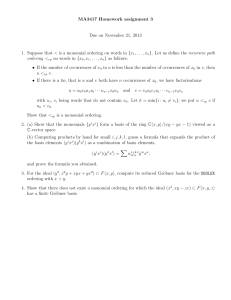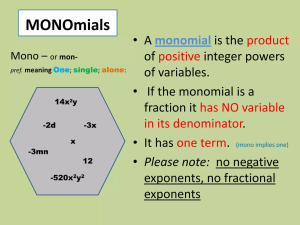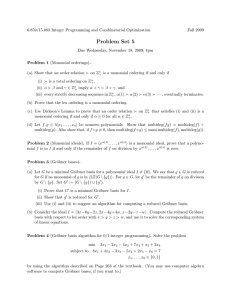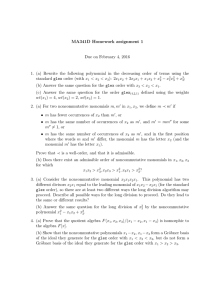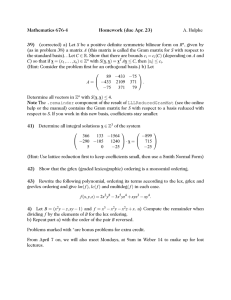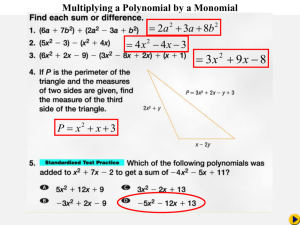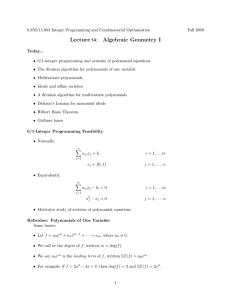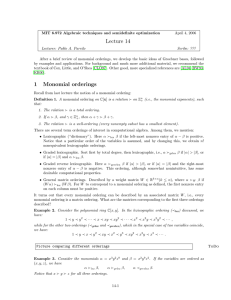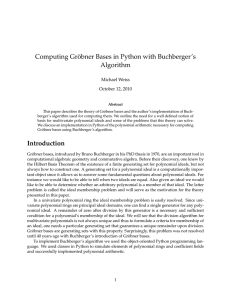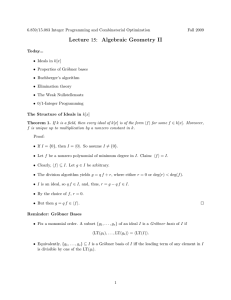Mathematics 467 Homework (due Mar. 13) 31) A. Hulpke
advertisement
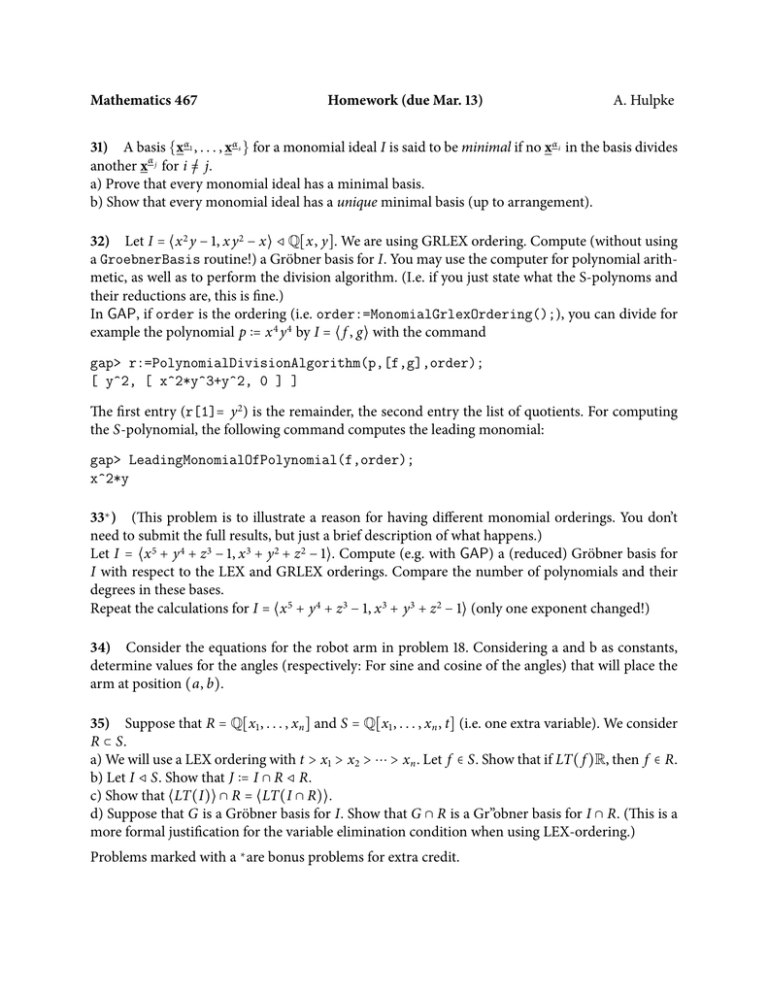
Mathematics 467
Homework (due Mar. 13)
A. Hulpke
31) A basis {xα 1 , . . . , xα s } for a monomial ideal I is said to be minimal if no xα i in the basis divides
another xα j for i =/ j.
a) Prove that every monomial ideal has a minimal basis.
b) Show that every monomial ideal has a unique minimal basis (up to arrangement).
32) Let I = ⟨x 2 y − 1, x y 2 − x⟩ ⊲ Q[x, y]. We are using GRLEX ordering. Compute (without using
a GroebnerBasis routine!) a Gröbner basis for I. You may use the computer for polynomial arithmetic, as well as to perform the division algorithm. (I.e. if you just state what the S-polynoms and
their reductions are, this is fine.)
In GAP, if order is the ordering (i.e. order:=MonomialGrlexOrdering();), you can divide for
example the polynomial p ∶= x 4 y 4 by I = ⟨ f , g⟩ with the command
gap> r:=PolynomialDivisionAlgorithm(p,[f,g],order);
[ y^2, [ x^2*y^3+y^2, 0 ] ]
The first entry (r[1]= y 2 ) is the remainder, the second entry the list of quotients. For computing
the S-polynomial, the following command computes the leading monomial:
gap> LeadingMonomialOfPolynomial(f,order);
x^2*y
33∗ ) (This problem is to illustrate a reason for having different monomial orderings. You don’t
need to submit the full results, but just a brief description of what happens.)
Let I = ⟨x 5 + y 4 + z 3 − 1, x 3 + y2 + z 2 − 1⟩. Compute (e.g. with GAP) a (reduced) Gröbner basis for
I with respect to the LEX and GRLEX orderings. Compare the number of polynomials and their
degrees in these bases.
Repeat the calculations for I = ⟨x 5 + y 4 + z 3 − 1, x 3 + y 3 + z 2 − 1⟩ (only one exponent changed!)
34) Consider the equations for the robot arm in problem 18. Considering a and b as constants,
determine values for the angles (respectively: For sine and cosine of the angles) that will place the
arm at position (a, b).
35) Suppose that R = Q[x1 , . . . , x n ] and S = Q[x1 , . . . , x n , t] (i.e. one extra variable). We consider
R ⊂ S.
a) We will use a LEX ordering with t > x1 > x2 > ⋯ > x n . Let f ∈ S. Show that if LT( f )R, then f ∈ R.
b) Let I ⊲ S. Show that J ∶= I ∩ R ⊲ R.
c) Show that ⟨LT(I)⟩ ∩ R = ⟨LT(I ∩ R)⟩.
d) Suppose that G is a Gröbner basis for I. Show that G ∩ R is a Gr”obner basis for I ∩ R. (This is a
more formal justification for the variable elimination condition when using LEX-ordering.)
Problems marked with a ∗ are bonus problems for extra credit.

